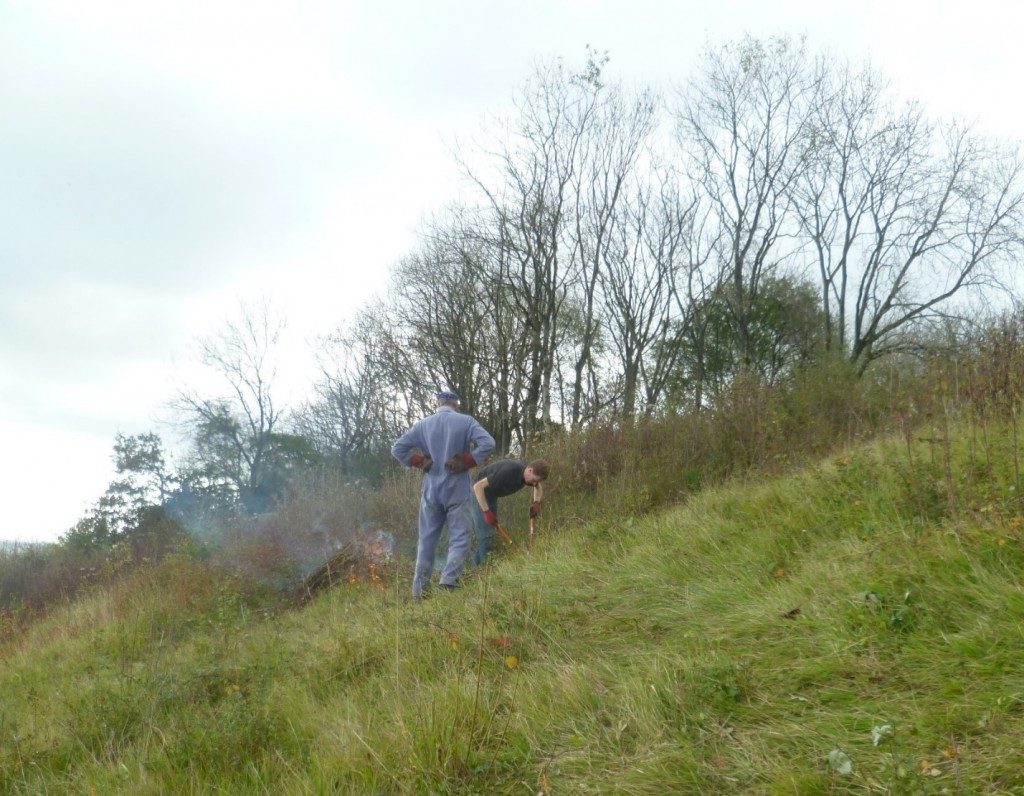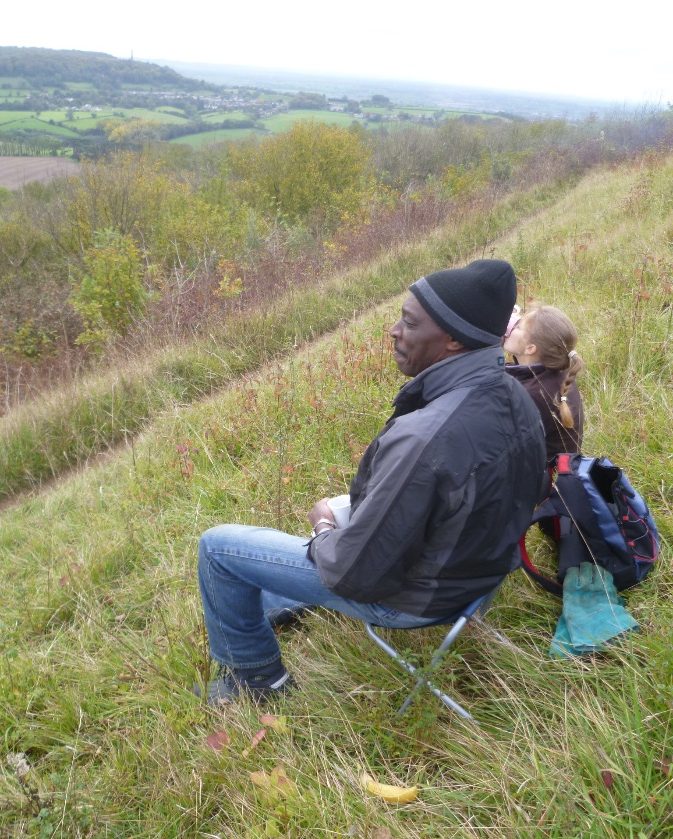GVCV TASK 20 October 2019 – STINCHCOMBE HILL, DURSLEY
See GVCV previous report dated 26/02/1017 giving a detailed description of the Stinchcombe Hill site and of our efforts to reverse the decline of the butterfly population with especial reference to the Duke of Burgundy, the Dingy Skipper, the Heath Fritillary and the Large Blue.

The site is managed by a warden from the Stinchcombe Hill Butterfly trust with a team of volunteers and their objective is to bring the site back to its original state of untreated Cotswold grassland forming an environment favouring orchids, butterflies and sky larks.
This is an uphill struggle because lack of resources has allowed extensive encroachment of trees and shrubs.
The lower slopes are by far the most in need of clearing, but this is private land belonging to Stinchcombe House and cannot therefore be included in our scope of works. Discussions are however in progress with the current owner.
Our task on Sunday was to progress the clearance of the scrub etc on the Western slopes of Drakestone Point consisting mainly of Blackthorn and Ash all bound together with bramble.
This slope is just below the plateau known locally as “the village green”, notwithstanding that it is remote from the village.

The volunteers tackled the blackthorn etc with loppers and bushsaws, dragging the cut material to a fire site
There is some debate as to the ecological significance of bonfires as opposed to retaining the cut material in habitat piles but as soon as the material reaches any significant quantity then the advantages of habitat piles become disadvantages as the retained material covers the very grass we are trying to expose.
Better by far is a roaring bonfire, consuming the brash and warming the volunteers on cold days on what is a very exposed site




An unexpected find was a Fox Moth caterpillar, named for the fox red stripe down its back.
It feeds on bramble and enjoys sunning itself on paths etc (we had some hot sunny spells that day). It over-winters in leaf litter or loose soil and then pupates in spring for a month before emerging as a Fox moth.



Nature being nature, the material we cut begins to re-grow as soon as we turn our backs and there are many sites where we return year after year to repeat the process in the same location.
In order to try to prevent this, the cut stumps are painted with glyphosate which penetrates downwards to kill the roots of the plant. This painting must be done within minutes of the stem being cut else the capillaries will self seal. Use of this powerful chemical can only be by a trained and licensed operator, in this case the Warden on the site.
So theoretically, in a few years we will have worked ourselves out of a job, but the expression “dream on” springs to mind.
